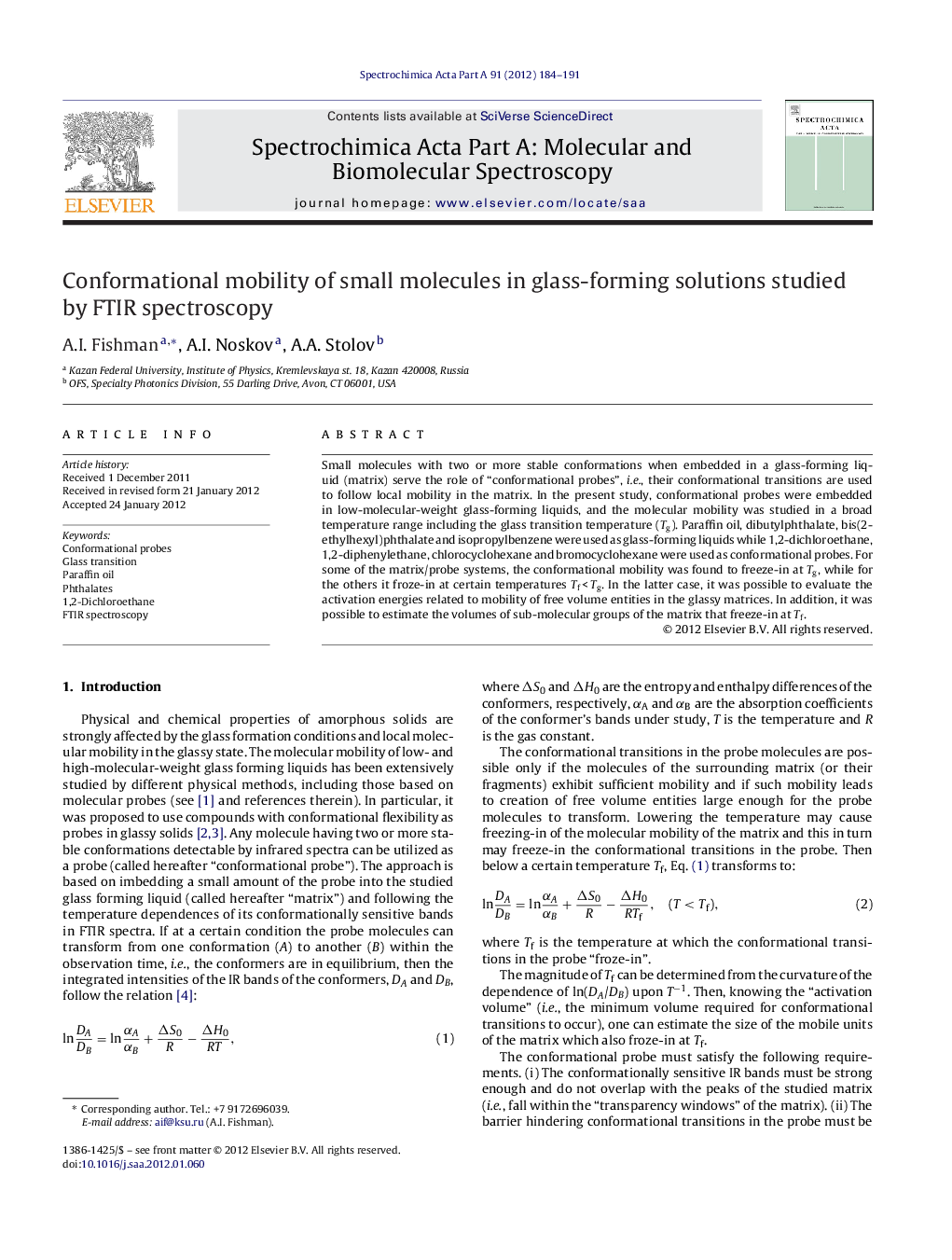| Article ID | Journal | Published Year | Pages | File Type |
|---|---|---|---|---|
| 1233001 | Spectrochimica Acta Part A: Molecular and Biomolecular Spectroscopy | 2012 | 8 Pages |
Small molecules with two or more stable conformations when embedded in a glass-forming liquid (matrix) serve the role of “conformational probes”, i.e., their conformational transitions are used to follow local mobility in the matrix. In the present study, conformational probes were embedded in low-molecular-weight glass-forming liquids, and the molecular mobility was studied in a broad temperature range including the glass transition temperature (Tg). Paraffin oil, dibutylphthalate, bis(2-ethylhexyl)phthalate and isopropylbenzene were used as glass-forming liquids while 1,2-dichloroethane, 1,2-diphenylethane, chlorocyclohexane and bromocyclohexane were used as conformational probes. For some of the matrix/probe systems, the conformational mobility was found to freeze-in at Tg, while for the others it froze-in at certain temperatures Tf < Tg. In the latter case, it was possible to evaluate the activation energies related to mobility of free volume entities in the glassy matrices. In addition, it was possible to estimate the volumes of sub-molecular groups of the matrix that freeze-in at Tf.
Graphical abstractFigure optionsDownload full-size imageDownload as PowerPoint slideHighlights► Local mobility in glasses studied via conformational transitions of embedded molecules. ► Paraffin oil, dibutylphthalate, dioctylphthalate and cumene as glass-forming liquids. ► 1,2-Dichloroethane, 1,2-diphenylethane and chlorocyclohexane as probes. ► Conformational transitions observed below the glass transition temperature. ► Estimated activation energies and sizes of free volume entities in glasses.
